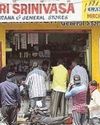
Over the past year, the liquidity crisis in the NBFC space, more so in the housing finance sector, has brought to light structural issues in the asset-liability management (ALM) of most players. Housing Development Finance Corporation (HDFC), the market leader in the home finance segment, has been able to tide over the tough times, thanks to its sound business model and steadfast discipline in ALM. The company’s ability to raise funds from diverse sources — at reasonable rates — has helped it gain market share when many other players facing liquidity crunch have lost ground.
While loan growth for HDFC has moderated over the past year — given the challenges in the real estate sector, in particular the developer segment — the performance has been nonetheless healthy. In the latest September quarter, HDFC reported a growth of 11.7 per cent in its overall loan book (excluding sale of loans to HDFC Bank), driven by a 15 per cent uptick in the retail/individual loan segment. Growth in the non-individual segment, however, remained modest at about 3 per cent as the company continued to consciously curtail some of its lending to the segment, given the uncertainty and risks in the space.
While the company’s delinquency in the individual segment has been stable, the non-individual segment continued to report stress in the September quarter, with the GNPA ratio inching up. An improvement in the non-individual segment will be key for a significant improvement in loan growth and profitability.
This story is from the November 11, 2019 edition of The Hindu Business Line.
Start your 7-day Magzter GOLD free trial to access thousands of curated premium stories, and 9,000+ magazines and newspapers.
Already a subscriber ? Sign In
This story is from the November 11, 2019 edition of The Hindu Business Line.
Start your 7-day Magzter GOLD free trial to access thousands of curated premium stories, and 9,000+ magazines and newspapers.
Already a subscriber? Sign In

Covid Presents An Opportunity For India
India must attract investors exiting China post-Covid. Streamlining of project clearances and relaxation in FRBM norms will help

Did Alternative Assets Shield You From Covid-19 Volatility?
The assets closely linked to stock and debt markets could not stave off the losses

How To Put Aircraft To Bed
Preserving grounded planes, to get them up and flying at short notice, is a challenging task. Ashwini Phadnis captures the process

There Can Be No Going Back On WFH
Covid-19 has fast-forwarded the shift to ‘work from home’. However, some face-to-face connect will always be needed

UN, WHO Urged To Ensure ‘Benefit Sharing' Of Covid-Related Data
Biopharma firms should reach vaccines, medicines to poor nations at an affordable price, say civil society bodies

With No Clear Signal From Rlys, States Explore Ways To Bring Back Migrants
Quarantine centres, cross-country buses being arranged even as migrants hop on to boats, trucks and ambulances

Centre Allows All Neighbourhood Shops To Open But With Riders
Final call will be taken by local authorities; shopping complexes that draw fewer ‘outsiders’ are permitted to operate

Covid Impact Relatively Muted In India
Compared to Italy and the US, India’s rate of infection spread has been slow. This can be attributed to the strict measures in place

How Global Trade Will Fare Post-Covid
China isn’t likely to lose its pre-eminent position soon. India, for one, will need to make manufacturing globally competitive

How To Curb Harassment In The Virtual Office
Training and sensitisation are essential. Institute a strict dress code and chat etiquette to ensure professionalism during video calls